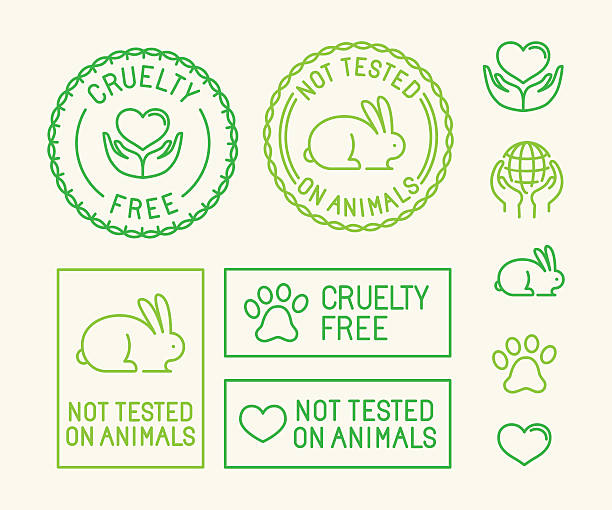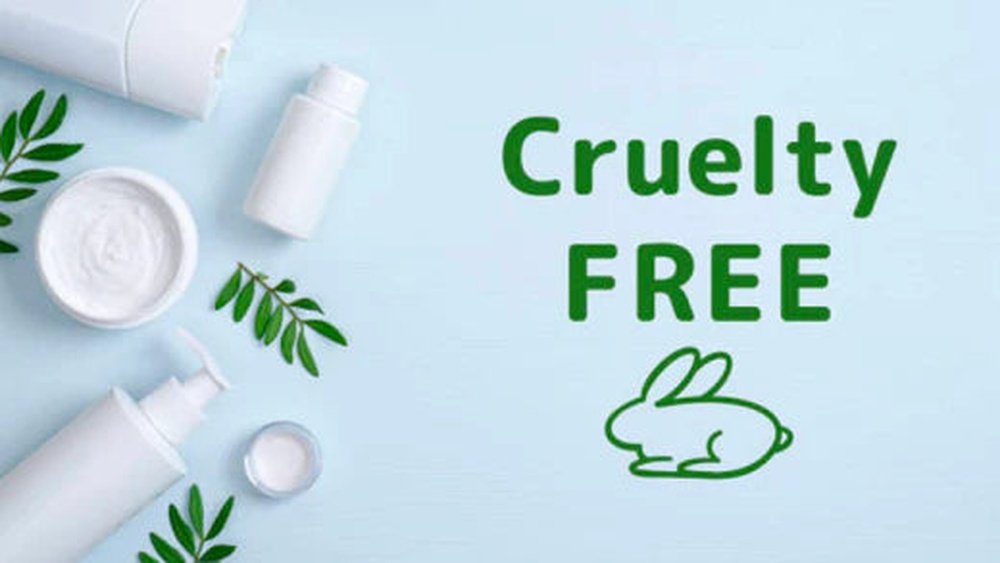Choosing cruelty-free brands might seem overwhelming at first. You want to make sure your purchases truly align with your values and don’t support animal testing.
But how can you be certain which brands are genuinely cruelty-free? This guide will help you cut through the confusion and spot trustworthy cruelty-free products with ease. By the end, you’ll feel confident about making choices that protect animals and reflect your commitment to kindness.
Ready to discover the secrets behind cruelty-free shopping? Let’s dive in.

Credit: www.pai-shau.com
Spotting Cruelty Free Labels
Choosing cruelty-free brands starts with spotting the right labels on products. These labels tell you if a brand avoids animal testing. They act as quick guides in stores or online. Knowing what each label means helps you make kinder choices. Below are key certification logos and their true meanings.
Key Certification Logos
Several logos show a product is cruelty-free. The Leaping Bunny logo is one of the most trusted. It means no animal testing at any stage of product development. Another common logo is from PETA’s Beauty Without Bunnies program. It also confirms no animal testing. The Choose Cruelty-Free (CCF) logo from Australia is another sign. These logos often appear on cosmetics and personal care items. Spotting these marks is a strong hint the brand cares about animals.
What Logos Really Mean
Not all cruelty-free logos mean the same thing. Some logos only check if the final product is tested on animals. Others, like Leaping Bunny, require a full supply chain check. This means no animal testing by suppliers either. Some brands may use “not tested on animals” claims without certification. These claims can be unclear or misleading. Certified logos offer a better guarantee. Always check the label carefully and trust certified symbols for real cruelty-free assurance.

Credit: livingsafe.com.au
Researching Brand Practices
Researching brand practices helps ensure products align with cruelty-free values. It reveals if a brand truly avoids animal testing. Careful research protects against misleading claims and greenwashing. Trust comes from clear, honest information about brand ethics.
Knowing where to find reliable details is key. This section guides you through checking official statements and using trusted online resources.
Checking Official Brand Statements
Start by visiting the brand’s official website. Look for their animal testing policy or ethics page. Genuine cruelty-free brands clearly state their commitment. They explain how they avoid animal testing at every stage.
Brands may also provide third-party certification details. Certifications from groups like Leaping Bunny or PETA add credibility. Read these statements carefully to spot vague or unclear language. If a brand does not mention animal testing, be cautious.
Using Trusted Online Resources
Online databases list verified cruelty-free brands. Use websites like Cruelty-Free Kitty, Logical Harmony, or PETA’s cruelty-free list. These sites update regularly and verify brand claims. They save time and reduce guesswork.
Check multiple sources to confirm consistency. Some brands may test on animals in some countries. Trusted resources reveal such exceptions. Using these tools helps you shop confidently and ethically.
Understanding Certification Differences
Choosing cruelty-free brands means understanding the different certifications. These labels show if a company avoids animal testing. Not all certifications are the same. Some have stricter rules and higher standards. Knowing these differences helps you pick truly cruelty-free products. This section explains key certification types and how they vary worldwide.
Leaping Bunny Vs Other Certifications
Leaping Bunny is one of the most trusted cruelty-free certifications. It requires brands to prove no animal testing at any stage. This includes suppliers and ingredients. Other certifications, like PETA’s cruelty-free logo, also ban animal testing. But they may not require as strict audits or supplier checks. Some certifications allow companies to self-declare their cruelty-free status. Leaping Bunny demands independent verification. This makes it more reliable for consumers.
Global Certification Variations
Cruelty-free standards differ around the world. Some countries have strict animal testing bans, like the European Union. Others allow animal tests for safety or legal reasons. Certifications must adapt to local laws. For example, a brand may be cruelty-free in one country but test animals elsewhere. Global certifications try to cover all markets. They push companies to stop animal testing everywhere. Understanding these variations can help you make better choices.

Credit: brutheenterprises.com
Avoiding Common Pitfalls
Choosing cruelty-free brands can be tricky. Many brands claim to be kind to animals but are not fully cruelty-free. Avoiding common pitfalls helps you make better choices. This section highlights key issues to watch out for.
Brands That Test On Animals Indirectly
Some brands do not test on animals themselves. They hire third parties or suppliers who do. This indirect testing still harms animals. These brands may say they are cruelty-free, but they are not. Always check if the brand allows animal testing by partners. Look for clear cruelty-free certifications. Without them, the brand may not be fully cruelty-free.
Misleading Marketing Claims
Brands often use confusing terms to seem cruelty-free. Words like “not tested on animals” can be unclear. Sometimes, they only mean their finished products. Ingredients might still be tested on animals. Labels without official cruelty-free logos can mislead you. Check for trusted seals like Leaping Bunny or PETA. These prove a brand’s true cruelty-free status. Be careful of vague claims and research brands before buying.
Choosing Vegan And Eco-friendly Options
Choosing vegan and eco-friendly options helps support brands that care for animals and the planet. These choices reduce harm to wildlife and lower environmental damage. Many consumers prefer products that avoid animal ingredients and use sustainable materials. This approach aligns with cruelty-free values and promotes a healthier world.
Combining Cruelty-free With Vegan
Cruelty-free means no animal testing at any stage. Vegan products go further by excluding all animal-derived ingredients. This includes beeswax, honey, milk, and gelatin. Selecting brands that are both cruelty-free and vegan ensures no animals suffer or are used in the product. Look for certifications like “Certified Vegan” or cruelty-free logos on packaging. These labels help identify trustworthy brands easily.
Sustainability And Ethical Impact
Eco-friendly brands focus on reducing waste and pollution. They use biodegradable packaging and renewable resources. Ethical impact includes fair labor practices and community support. Choosing these brands promotes better working conditions worldwide. Sustainable products often use natural, organic ingredients that are safer for the environment. Supporting such companies encourages a shift toward greener, kinder industry standards.
Frequently Asked Questions
Is Leaping Bunny Better Than Other Logos?
Leaping Bunny sets stricter cruelty-free standards than many logos. It guarantees no animal testing throughout production. This makes it more reliable for ethical shoppers.
Is Dove 100% Cruelty-free?
Dove is not 100% cruelty-free. It sells products in countries requiring animal testing by law.
What Are Some Popular Cruelty-free Brands?
Popular cruelty-free brands include Lush, Seventh Generation, Method, John Paul Mitchell, and Pacifica. These brands avoid animal testing and offer ethical products. Look for certifications like Leaping Bunny or PETA to confirm cruelty-free status. Choose these brands for ethical and safe beauty and cleaning products.
Is Amazon Animal Cruelty-free?
Amazon itself does not test products on animals and supports cruelty-free practices. However, individual brands on Amazon may vary. Always check each product’s cruelty-free certification before purchasing.
What Does Cruelty-free Mean For A Brand?
Cruelty-free means no animal testing is done on the brand’s products or ingredients.
How Can I Identify Cruelty-free Brands Easily?
Look for trusted logos like Leaping Bunny or PETA’s cruelty-free certification on packaging.
Why Is Choosing Cruelty-free Brands Important?
It helps stop animal suffering and supports ethical, humane product development.
Conclusion
Choosing cruelty-free brands supports kindness to animals and the planet. Check for trusted logos like Leaping Bunny or PETA on products. Research brands to ensure they follow strict no-animal-testing policies. Small changes in buying habits create a big impact over time.
Stay informed and choose brands that respect animal welfare. Your choices help promote a more ethical and compassionate world.
 Skip to content
Skip to content 